Fabric 101 for Designers: How to Understand the Textures
Written by DoraFashion
Selecting the right fabric texture is an art in itself, one that can truly elevate your designs. The tactile sensation of a garment speaks volumes about its quality and aesthetic appeal. In this guide, we’ll dive into the fascinating world of fabric textures, unraveling their significance and providing insights into their various forms. Remember, textures emerge from the interplay of fabric structures and composites, giving rise to a spectrum of options. Join us on this exploration as we introduce you to ten fundamental fabric textures, each offering a unique touch and visual character. Let’s embark on this journey of tactile creativity together.
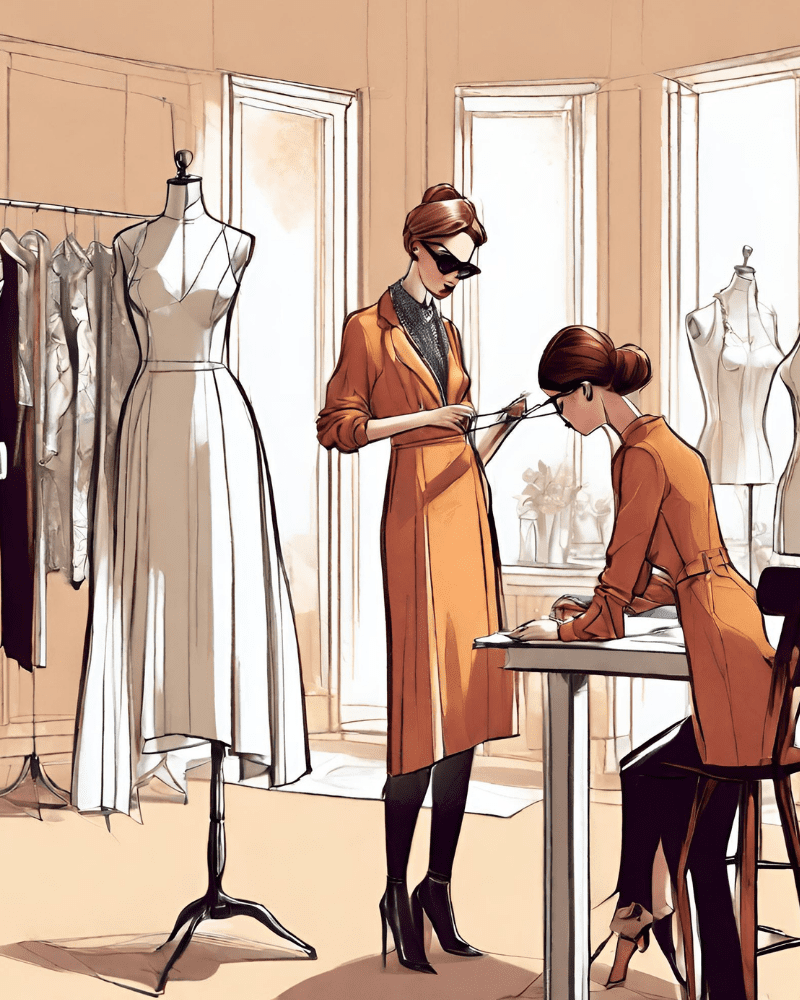

Understanding fabric textures is essential for a designer’s toolkit. The tactile quality of a garment can greatly impact the overall look and feel. In this guide, we’ll delve into the world of fabric textures, helping you make informed choices to bring your designs to life.
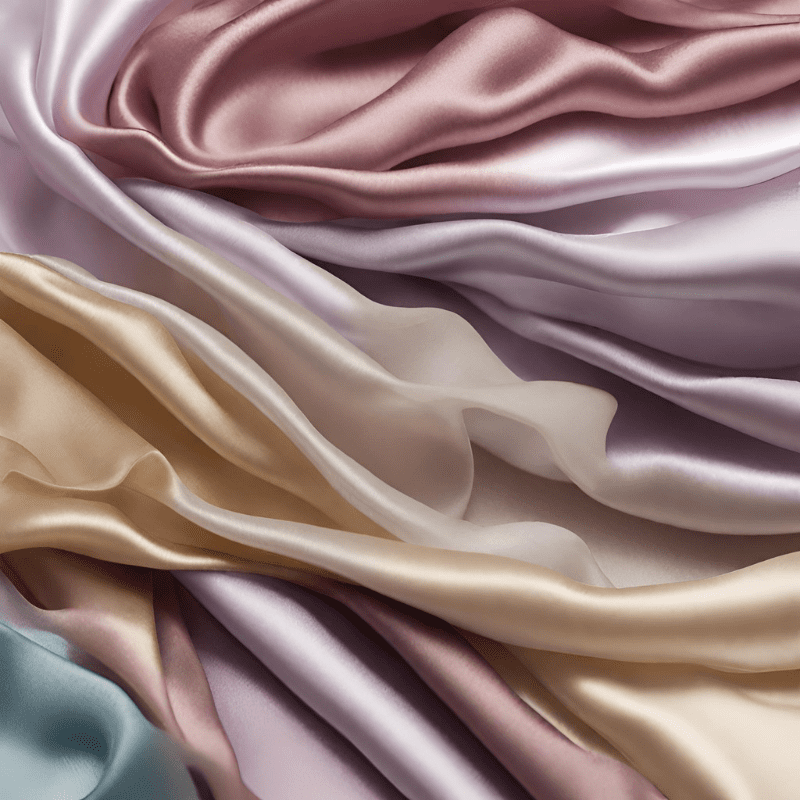








1. Smooth Textures:
Satin, Charmeuse, Silk, Organza , Chiffon
Smooth Textures
Satin
Satin: Satin is synonymous with luxury. Its smooth, glossy surface and high thread count make it a favorite for creating elegant and glamorous attire. Its impeccable drape adds a touch of sophistication to any design. However, keep in mind that satin can be a bit slippery, so it’s essential to handle it with care during the crafting process.
- Texture: Smooth, glossy surface with a high thread count.
- Drape: Falls elegantly, creating a luxurious look.
- Weight: Light to medium, depending on the blend.
- Pros: Shiny, glamorous appearance; ideal for formal wear.
- Cons: Can be slippery and less breathable than other fabrics.
- Examples: Evening gowns, lingerie, blouses, dresses, blazers.
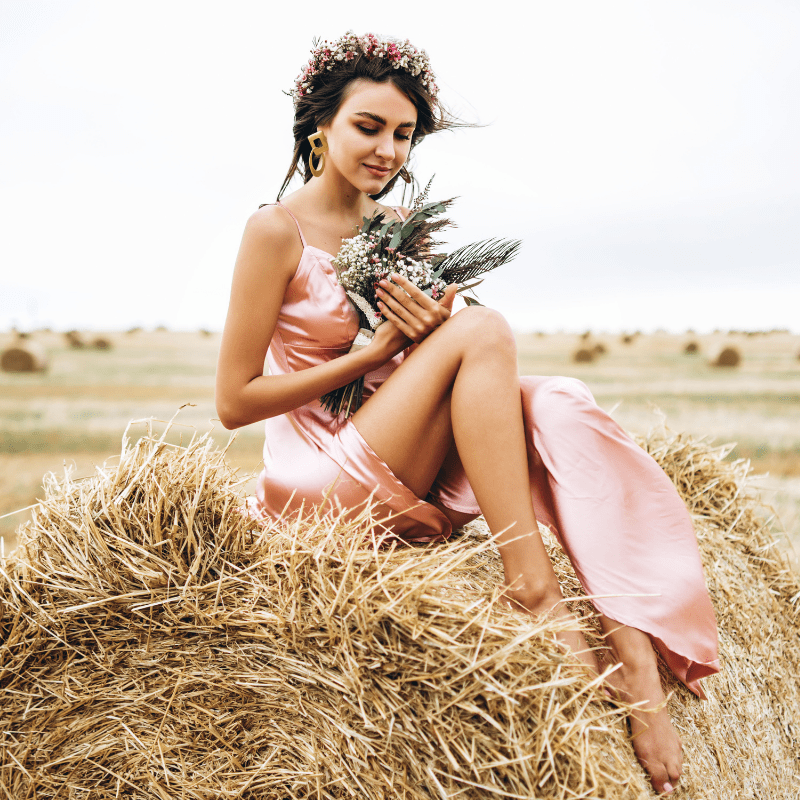

(Example of a Satin Dress)
Cupro
Cupro: Discover the allure of Cupro fabric, a textile renowned for its opulent feel and graceful drape. Derived from natural fibers, Cupro combines the best of both worlds – the luxurious texture akin to silk and the breathability of cotton. This exquisite fabric offers designers an elegant canvas to craft flowing dresses, skirts, blouses, and more. Join us on a journey through the world of Cupro, where sophistication meets comfort, and your creations take on a new level of timeless elegance.
Texture: Cupro fabric has a smooth and silky texture that resembles natural fibers like cotton and silk. It’s often chosen for its luxurious feel and elegant appearance.
Drape: Cupro fabric drapes beautifully, creating a flowing and graceful effect. Its fluidity makes it a popular choice for dresses and skirts.
Weight: Falling on the lightweight side, cupro is a breathable fabric that offers comfort and versatility.
Pros:
- Luxurious feel similar to silk
- Excellent drape for elegant designs
- Breathable and comfortable to wear
Cons:
- May wrinkle easily
- Requires delicate care to maintain its quality
Usage Areas: Dresses, blouses, skirts, linings, and other apparel items where a smooth and elegant drape is desired.
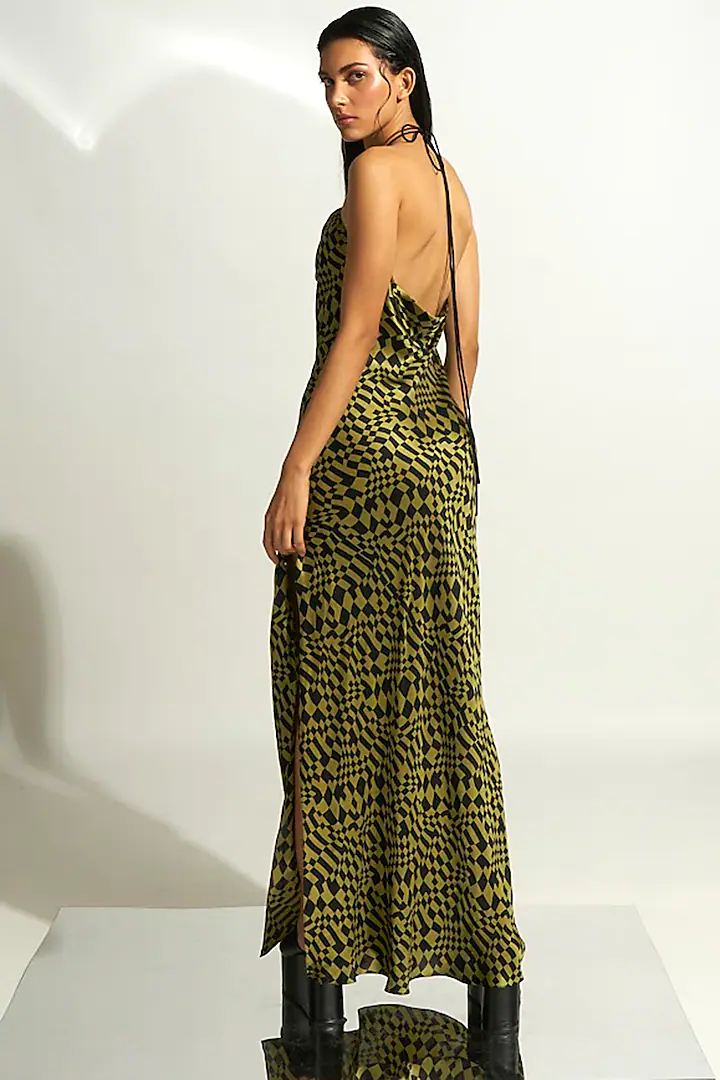

(Example of a Cupro Dress)
Silk
Silk: As a natural fabric, silk offers a unique texture that is both smooth and soft. Its lightweight quality makes it a versatile choice for various types of clothing. With silk, you get the best of both worlds: a luxurious feel and breathability. Designers often turn to silk when they want to infuse an air of elegance into their creations.
- Texture: Smooth, soft, and natural.
- Drape: Falls gracefully, offering a fluid look.
- Weight: Lightweight to medium.
- Pros: Luxurious, breathable, and versatile.
- Cons: Can be delicate and may require special care.
- Examples: Dresses, blouses, scarves.
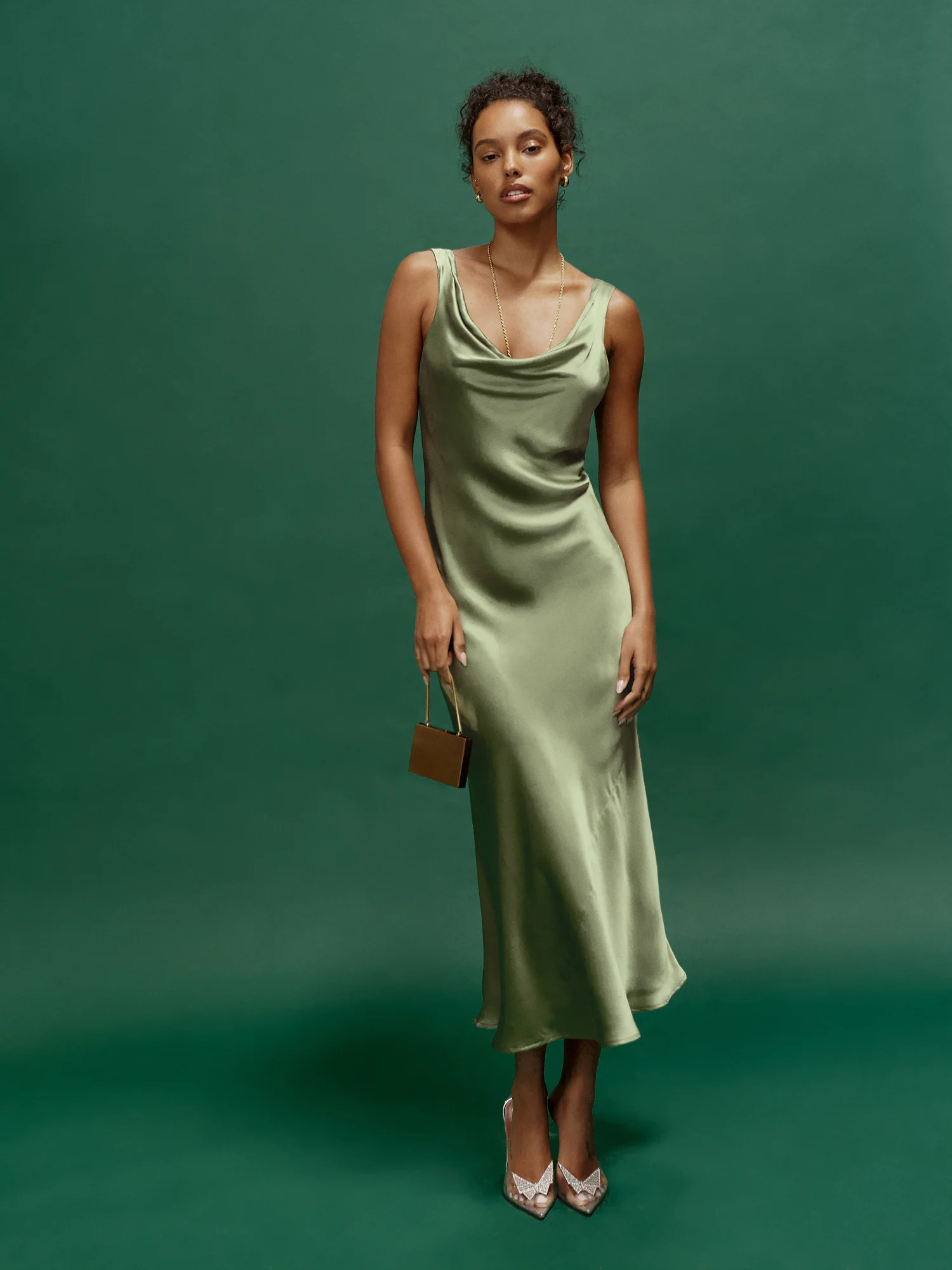

(Example of a Silk Dress)
Chiffon
Chiffon: Chiffon, characterized by its sheer and lightweight composition, is a fabric that evokes a sense of ethereality. Its floaty nature creates a delicate effect, making it a popular choice for layered designs. While chiffon imparts a romantic aura, it’s essential to handle it gently to prevent snags.
- Texture: Sheer, lightweight, and slightly rough.
- Drape: Floaty and ethereal, creating a delicate effect.
- Weight: Extremely light.
- Pros: Airy and romantic; suitable for layering.
- Cons: Delicate and may snag easily.
- Examples: Evening gowns, blouses, scarves, dresses
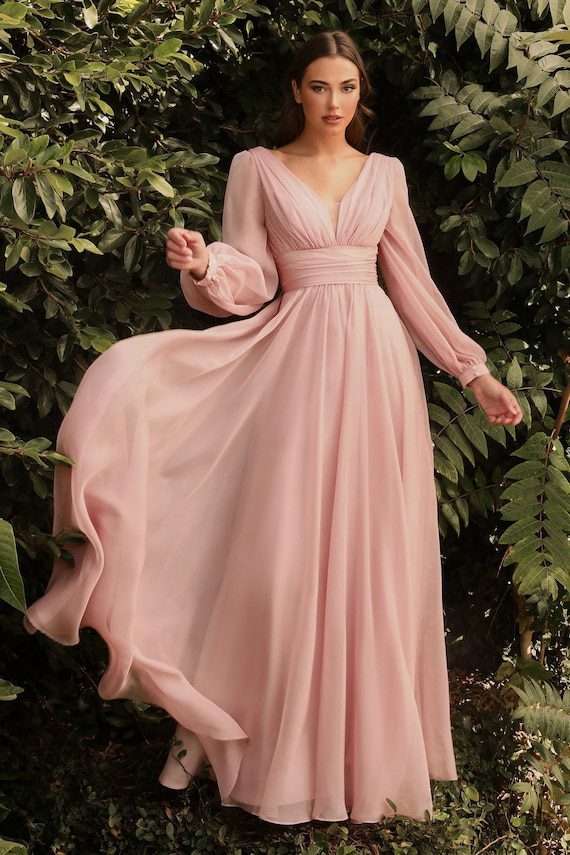

(Example of a Chiffon Dress)
Organza
Organza: Organza is known for its crisp and sheer texture, offering a unique stiffness that holds its shape. This quality makes it an ideal choice for designs that require structure. While organza imparts an elegant touch, keep in mind that it can be somewhat stiff and prone to wrinkles. With its ability to showcase embellishments beautifully, organza is a go-to for creating statement pieces.
- Texture: Crisp and sheer with a slight stiffness.
- Drape: Holds its shape, offering structure to designs.
- Weight: Light.
- Pros: Elegant and holds embellishments well.
- Cons: Can be somewhat stiff and may wrinkle.
- Examples: Wedding dresses, evening gowns, overlays.


(Example of an Organza Dress)
Charmeuse
Charmeuse: Charmeuse is akin to satin, boasting a silky, lustrous texture that exudes opulence. Its ability to drape gracefully lends a flowing effect to garments. Despite its lightweight nature, charmeuse radiates an air of luxury. It’s the go-to fabric for occasions that demand a touch of extravagance.
- Texture: Silky and lustrous, similar to satin.
- Drape: Drapes beautifully, creating a flowing effect.
- Weight: Lightweight.
- Pros: Luxurious feel, shiny surface; perfect for elegant occasions.
- Cons: Delicate and can be prone to snags.
- Examples: Evening dresses, lingerie, blouses.
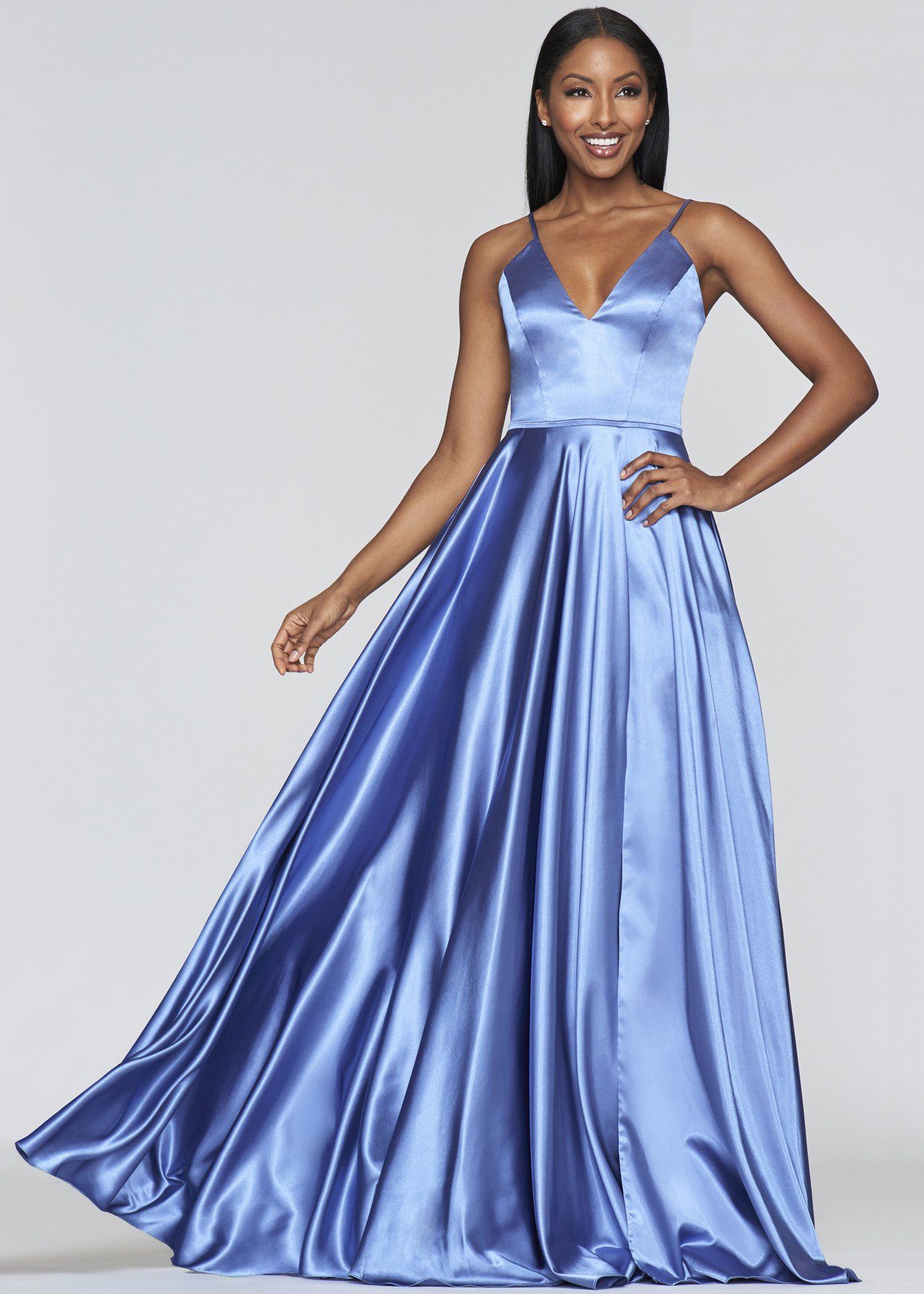

(Example of a Charmeuse Dress)







2. Crepy Textures:
Crepe, Georgette, Crinkled Chiffon
Crepy Textures
Crepe
Crepe: An embodiment of timeless elegance, crepe fabric features delicate crinkles that add depth and character to any garment. Its medium-weight nature strikes a perfect balance between structure and flow, allowing for graceful movement. While requiring a bit of extra care during sewing, crepe’s versatility makes it a go-to choice for various creations, from skirts to blouses and dresses.
- Texture: Delicately crinkled, adding depth and character.
- Drape: Falls elegantly, creating a graceful flow.
- Weight: Medium-weight, striking a balance between structure and flow.
- Pros: Timeless appeal, versatile for various garments.
- Cons: May require careful handling during sewing.
- Examples: Skirts, blouses, dresses, and more.
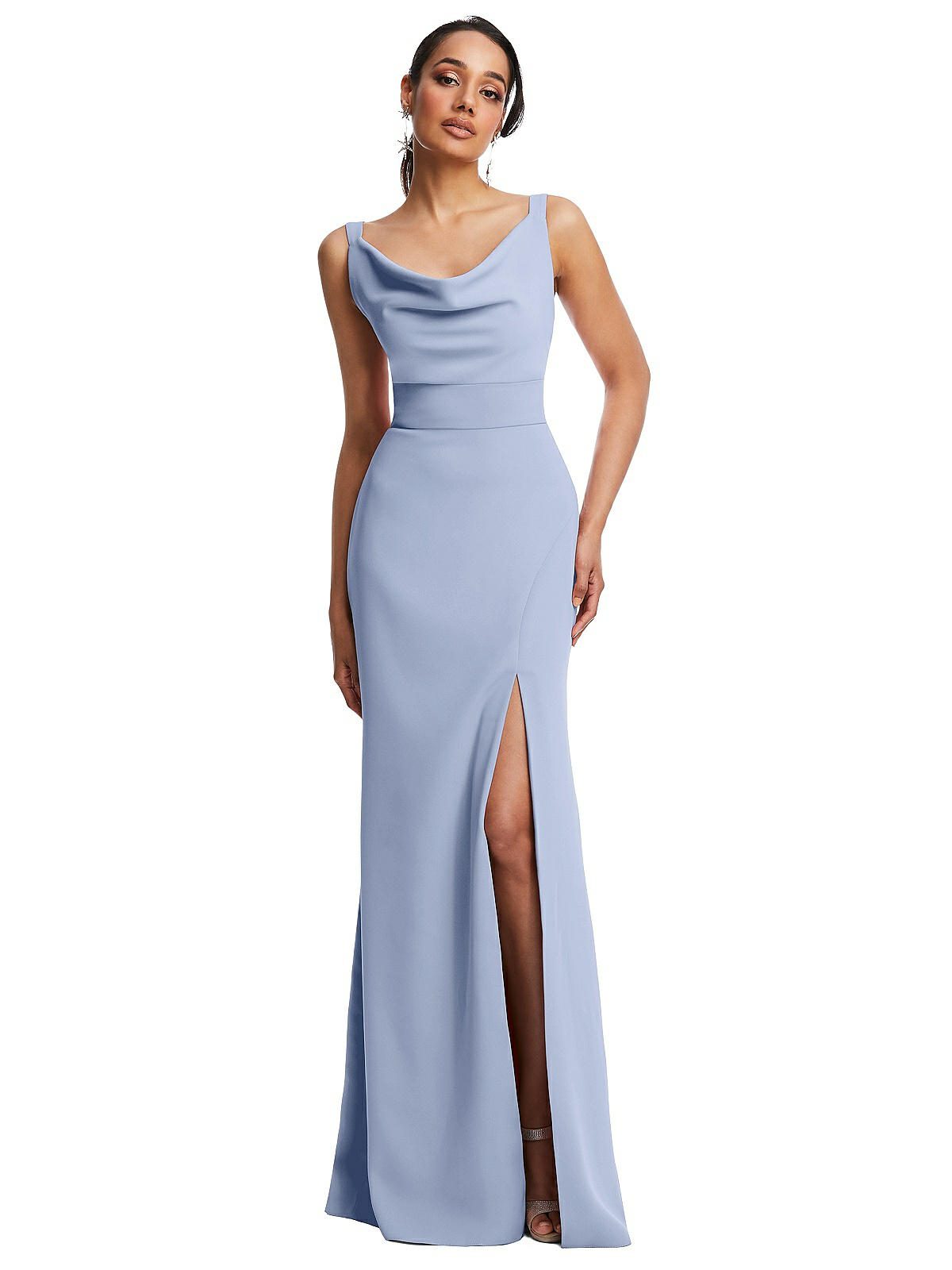

(Example of a Crepe Dress)
Georgette
Georgette: Step into the realm of sophistication with georgette fabric. Sharing similarities with crepe, it showcases a refined crinkled effect that lends an ethereal quality to any design. Its sheer and lightweight composition creates a graceful flow, making it an ideal choice for eveningwear. Though it demands special attention during cutting and sewing, the end result is worth the extra care.
- Texture: Shares similarities with crepe, featuring a refined crinkled effect.
- Drape: Sheer and lightweight, offering an ethereal quality.
- Weight: Light to medium, providing graceful movement.
- Pros: Adds a touch of sophistication, ideal for eveningwear.
- Cons: Requires special care during cutting and sewing.
- Examples: Evening gowns, blouses, dresses.
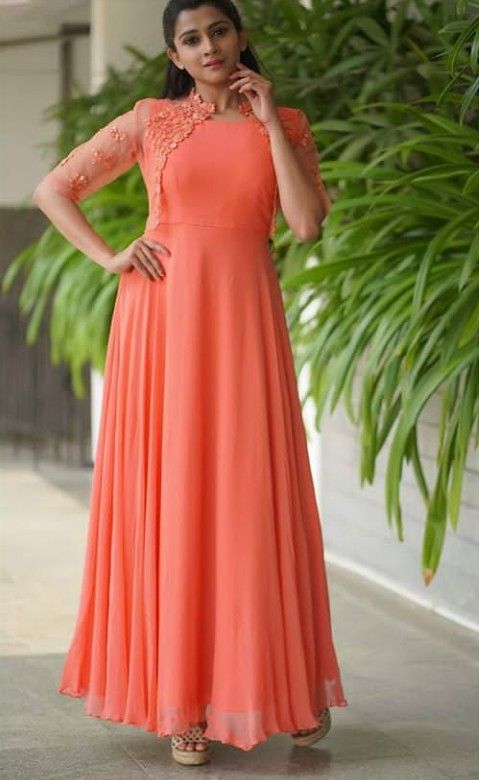

(Example of a Georgette Dress)
Crinkled Chiffon
Crinkled Chiffon: Exuding a delicate and artful wrinkling effect, crinkled chiffon fabric captures the essence of grace and beauty. This exceptionally lightweight and sheer fabric drapes with an ethereal quality, allowing for stunning layered looks. While its delicate nature calls for gentle handling, the visual interest it brings to a design is unparalleled. Perfect for layered looks, summer dresses, and elegant creations.
- Texture: Showcases a gentle, artful wrinkling effect.
- Drape: Extremely lightweight and sheer, draping beautifully.
- Weight: Airy and delicate, allowing for graceful movement.
- Pros: Creates visual interest, perfect for layered looks.
- Cons: Requires gentle handling due to its delicate nature.
- Examples: Layered looks, summer dresses, elegant designs.
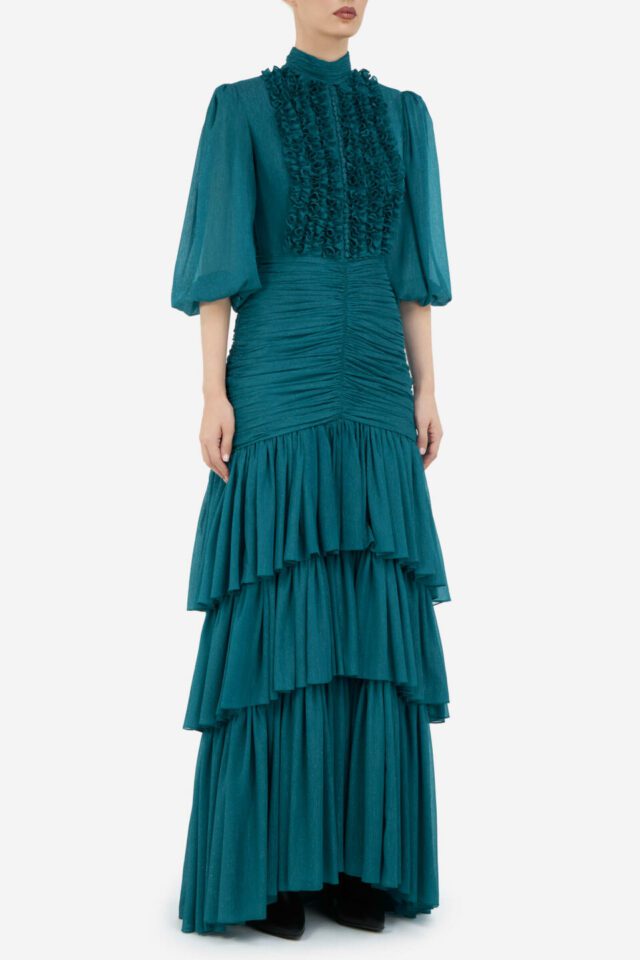

(Example of a Crinckle Chiffon Dress)







3. Crisp Textures:
Poplin, Taffeta, Organdy
Crisp Textures
Poplin
Poplin: Poplin fabric is a versatile and popular choice in the world of textiles. Known for its smooth and tightly woven texture, it offers a clean and polished appearance. Its moderate drape allows it to hold its shape while still providing some movement, making it suitable for various garments. With its medium weight, poplin is an excellent option for a wide range of clothing items. In this section, we’ll delve deeper into the characteristics, advantages, and best uses of this classic fabric.
Texture: Poplin fabric is known for its smooth and tightly woven texture, offering a clean and polished appearance.
Drape: It has a moderate drape, allowing it to hold its shape while still providing some movement.
Weight: Poplin is of medium weight, making it suitable for various garments.
Pros:
- Durable and long-lasting
- Versatile for a range of clothing items
- Provides a crisp finish
Cons:
- May require additional care when sewing due to its stiffness
Examples:
- Shirts
- Blouses
- Dresses


(Example of a Poplin Dress)
Tafetta
Taffeta: Taffeta fabric exudes an air of luxury and sophistication. Its distinctive rustling texture sets it apart, making it a favored choice for special occasions. With a crisp and smooth surface, taffeta holds its shape effectively, adding structure to formal wear. It falls under the category of medium-weight fabrics, allowing for the creation of elegant and dramatic silhouettes. Join us as we explore the unique features, benefits, and ideal applications of taffeta in the world of fashion.
Texture: Taffeta fabric has a distinctive rustling texture, conveying an air of luxury and sophistication.
Drape: It boasts a crisp and smooth surface, allowing it to hold its shape effectively.
Weight: Taffeta is of medium weight, providing structure for formal wear.
Pros:
- Elegant and refined appearance
- Creates dramatic silhouettes
- Suitable for formal occasions
Cons:
- Can be slightly challenging to work with due to stiffness
Examples:
- Evening gowns
- Cocktail dresses
- Formal wear


(Example of a Tafetta Dress)
Organdy
Organdy: Organdy fabric is a testament to delicacy and refinement. Combining a crisp texture with a sheer and ethereal appearance, it adds an enchanting and luminous effect to designs. Its fine weave results in a lightweight and airy drape, perfect for creating overlays and delicate details. Organdy falls into the lightweight category, making it an excellent choice for adding delicate touches to various garments. Join us on a journey through the world of organdy, where we’ll uncover its unique properties, advantages, and creative possibilities.
Texture: Organdy fabric combines a crisp texture with a sheer and delicate appearance.
Drape: Its fine weave results in a lightweight and airy drape.
Weight: Organdy is lightweight, perfect for creating ethereal overlays and delicate details.
Pros:
- Adds an enchanting, luminous effect to designs
- Ideal for creating delicate overlays and accessories
Cons:
- Requires careful handling due to its delicate nature
Examples:
- Ruffles
- Delicate overlays
- Accessories
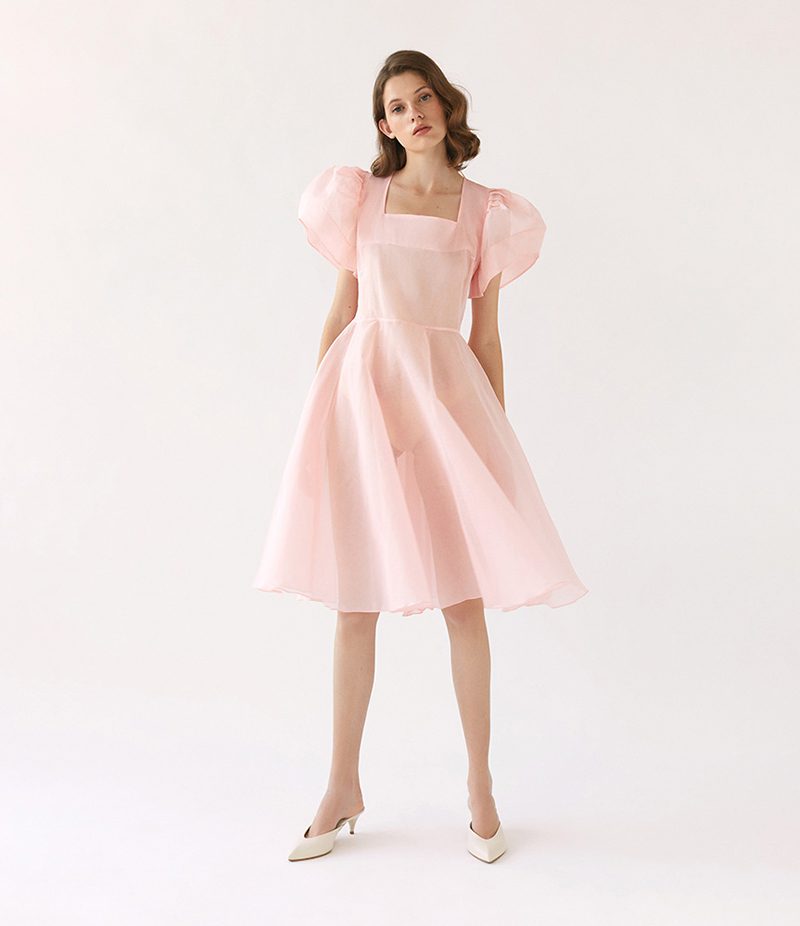

(Example of an Organdy Dress)







4. Soft Textures:
Modal, Jersey and Velvet
Soft Textures
Modal
Modal: Modal fabric embodies luxury with a touch of eco-friendliness. Known for its exceptionally soft texture, it provides a silky-smooth feel against the skin. Its drape is fluid and elegant, lending itself to flowing designs and graceful movements. Modal fabric is relatively lightweight, allowing for the creation of lightweight and breathable garments. In this section, we’ll explore the distinctive characteristics, advantages, and sustainable aspects of modal fabric, offering insights into its wide-ranging applications.
Texture: Modal fabric is known for its exceptionally soft texture, often likened to that of silk. It feels smooth and luxurious against the skin.
Drape: Modal fabric drapes gracefully, creating a flowing and elegant appearance. Its natural sheen adds a touch of sophistication.
Weight: Modal is a lightweight fabric, making it perfect for creating breathable and comfortable garments.
Pros:
- Silky-smooth texture for ultimate comfort
- Excellent drape for elegant designs
- Highly absorbent and breathable
Cons:
- May wrinkle easily
- Requires gentle care to maintain its quality
Examples: Dresses, blouses, underwear, pajamas, and other intimate apparel.


(Example of a Modal Dress)
Jersey
Jersey: Jersey fabric is synonymous with comfort and versatility. With its soft and stretchy texture, it offers a snug fit and ease of movement, making it a staple in casual wear. Its draping quality allows for a relaxed silhouette, adding to its popularity in everyday garments. Falling on the lighter side of the weight spectrum, jersey is perfect for creating breathable and comfortable apparel. Join us as we unravel the unique properties, benefits, and endless possibilities that jersey fabric brings to the world of fashion.
Texture: Jersey fabric boasts a soft, fine-knit texture that is both pliable and comfortable against the skin. Its unique knit structure gives it a slight elasticity, allowing for ease of movement.
Drape: Jersey fabric drapes effortlessly, creating a smooth and flattering silhouette. Its natural stretch ensures a snug fit while maintaining comfort.
Weight: Falling on the lighter end of the spectrum, jersey is a breathable fabric that is ideal for creating garments for everyday wear.
Pros:
- Comfortable and easy to wear
- Versatile for a wide range of apparel
- Resilient and retains its shape
Cons:
- May fray or curl at the edges if not properly finished
- Susceptible to pilling with frequent use
Examples: T-shirts, dresses, activewear, loungewear, and more.


(Example of a Jersey Dress)
Velvet
Velvet: Velvet fabric exudes opulence and timeless elegance. Renowned for its plush and soft texture, it invites touch and imparts a sense of luxury to any garment. Its inherent pile creates a sumptuous drape, adding depth and richness to designs. Velvet is a medium-weight fabric, making it suitable for a range of formal and semi-formal occasions. Join us as we delve into the world of velvet, uncovering its lavish properties, benefits, and the myriad ways it elevates fashion with its tactile allure.
Texture: Velvet fabric is characterized by its soft, plush texture, which is created by evenly distributed piles of fibers.
Drape: Velvet has a luxurious drape that adds depth and richness to designs. It exudes opulence and a timeless sense of elegance.
Weight: A medium-weight fabric, velvet is suitable for creating formal and semi-formal attire.
Pros:
- Luxurious and elegant appearance
- Soft and inviting to the touch
- Excellent for creating statement pieces
Cons:
- May require special care to avoid crushing or matting of the pile
- Sensitive to certain cleaning methods
Examples: Evening gowns, blazers, accessories, upholstery, and home decor items.
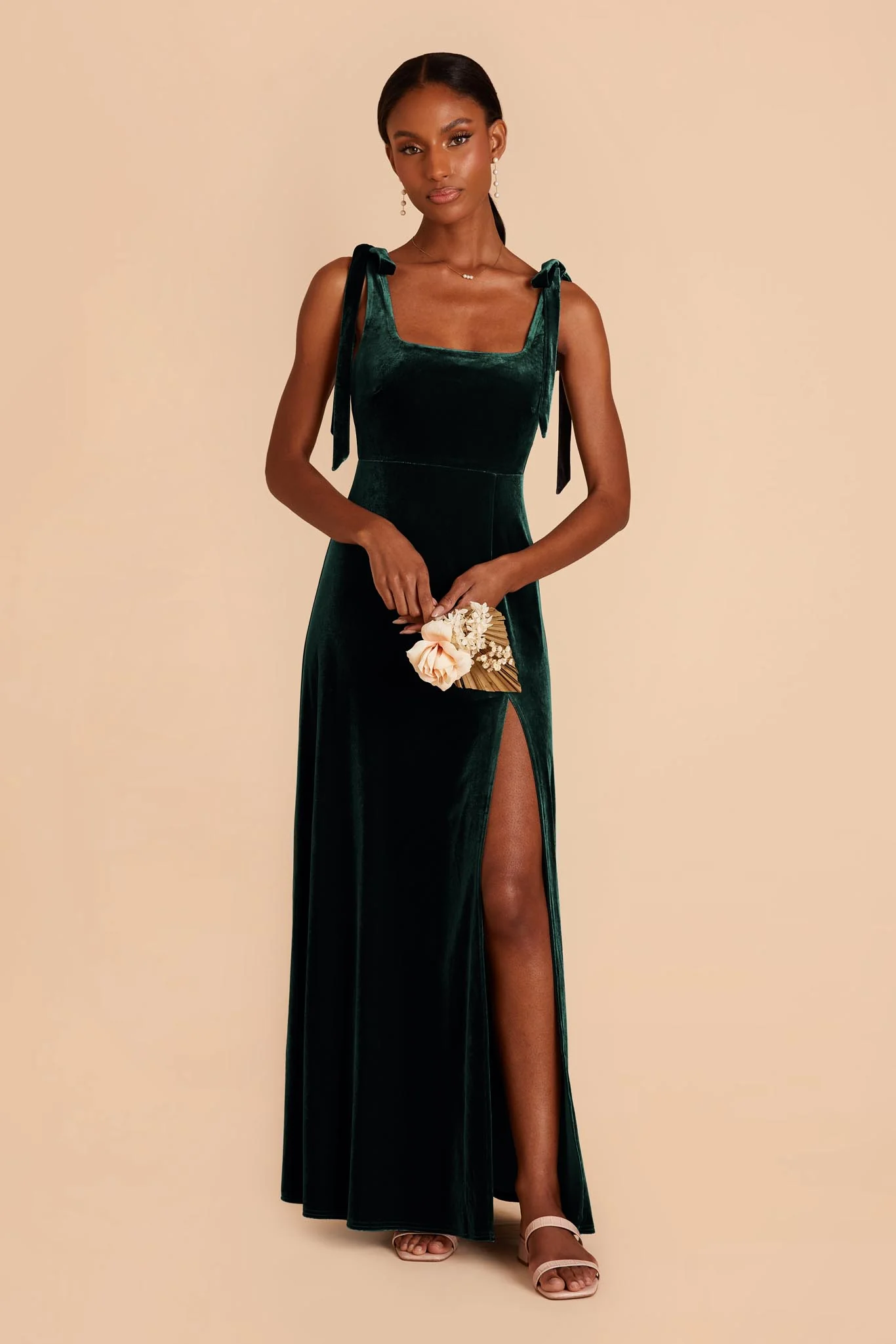

(Example of a Velvet Dress)







5. Rough Textures:
Denim, Gabardine, Tweed
Soft Textures
Denim
Denim: Denim, the quintessential fabric of casual wear, is beloved for its rugged texture and timeless appeal. Its tightly woven twill pattern gives it a durable quality that only gets better with age. From classic blue jeans to versatile jackets, denim’s versatility and durability have made it a staple in fashion around the world.
- Texture: Denim fabric is known for its rugged and durable texture, characterized by a tightly woven twill pattern.
- Drape: Denim typically has a stiff drape due to its sturdy construction.
- Weight: It is a medium to heavyweight fabric, making it ideal for durable garments.
- Pros: Denim is highly durable, ages well with wear, and is versatile for various styles.
- Cons: It may require special care in washing to maintain its appearance and fit.
- Examples: Denim is commonly used for jeans, jackets, skirts, and accessories.
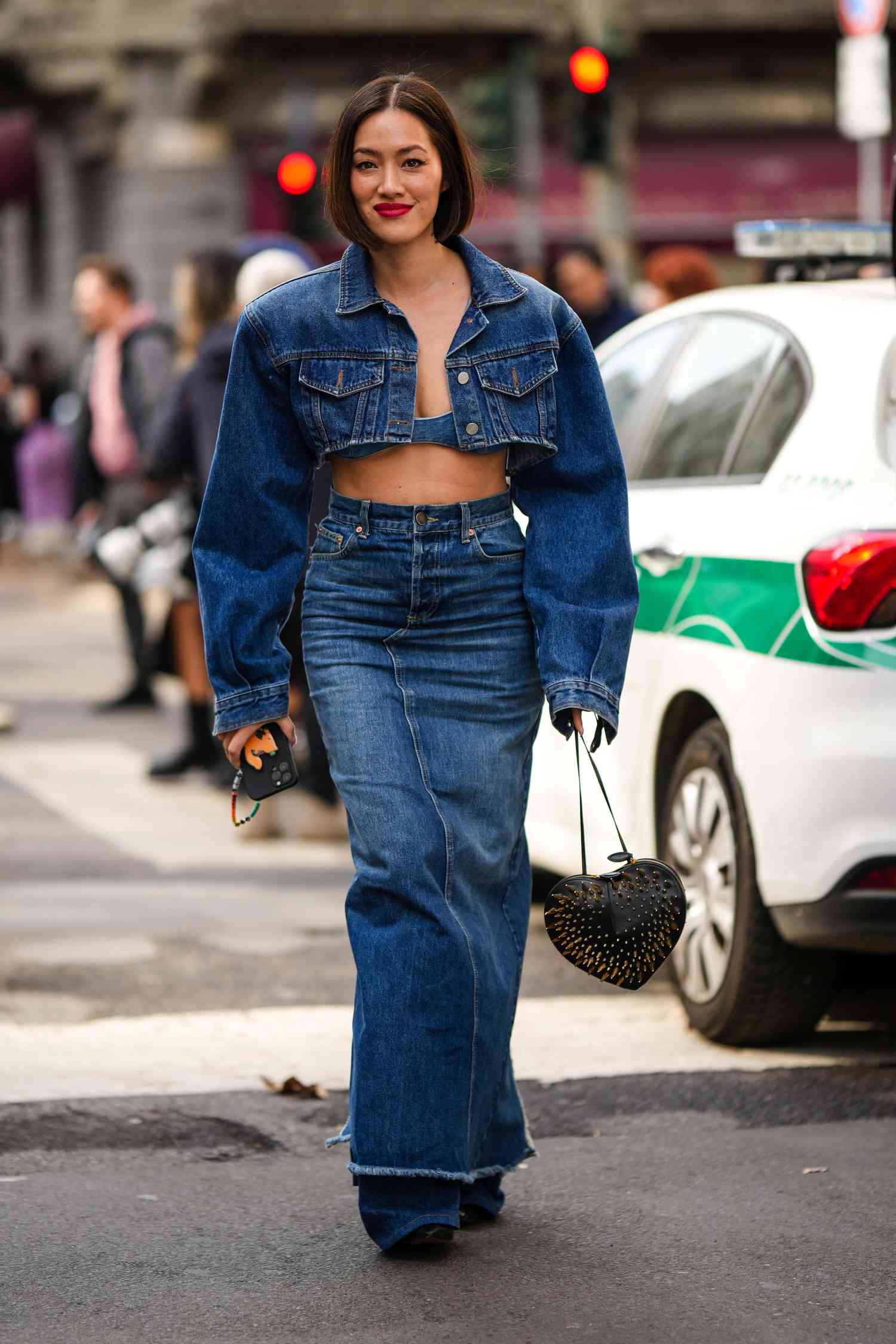

(Example of a Denim Jacket,Skirt Set)
Gabardine
Gabardine: Gabardine is a tightly woven, twill fabric known for its diagonal ribbing and durability. It’s commonly made from wool, but can also be crafted from cotton or synthetic fibers. Gabardine has a smooth finish and is often used for tailored garments due to its crisp appearance. It’s a versatile fabric suitable for trousers, suits, coats, and skirts, offering both comfort and refinement.
- Texture: Diagonal ribbing, smooth finish.
- Drape: Moderate stiffness, holds shape well.
- Weight: Medium.
- Pros: Durable, wrinkle-resistant, holds creases.
- Cons: Slightly less breathable.
- Examples: Trousers, suits, coats, skirts, and tailored attire.
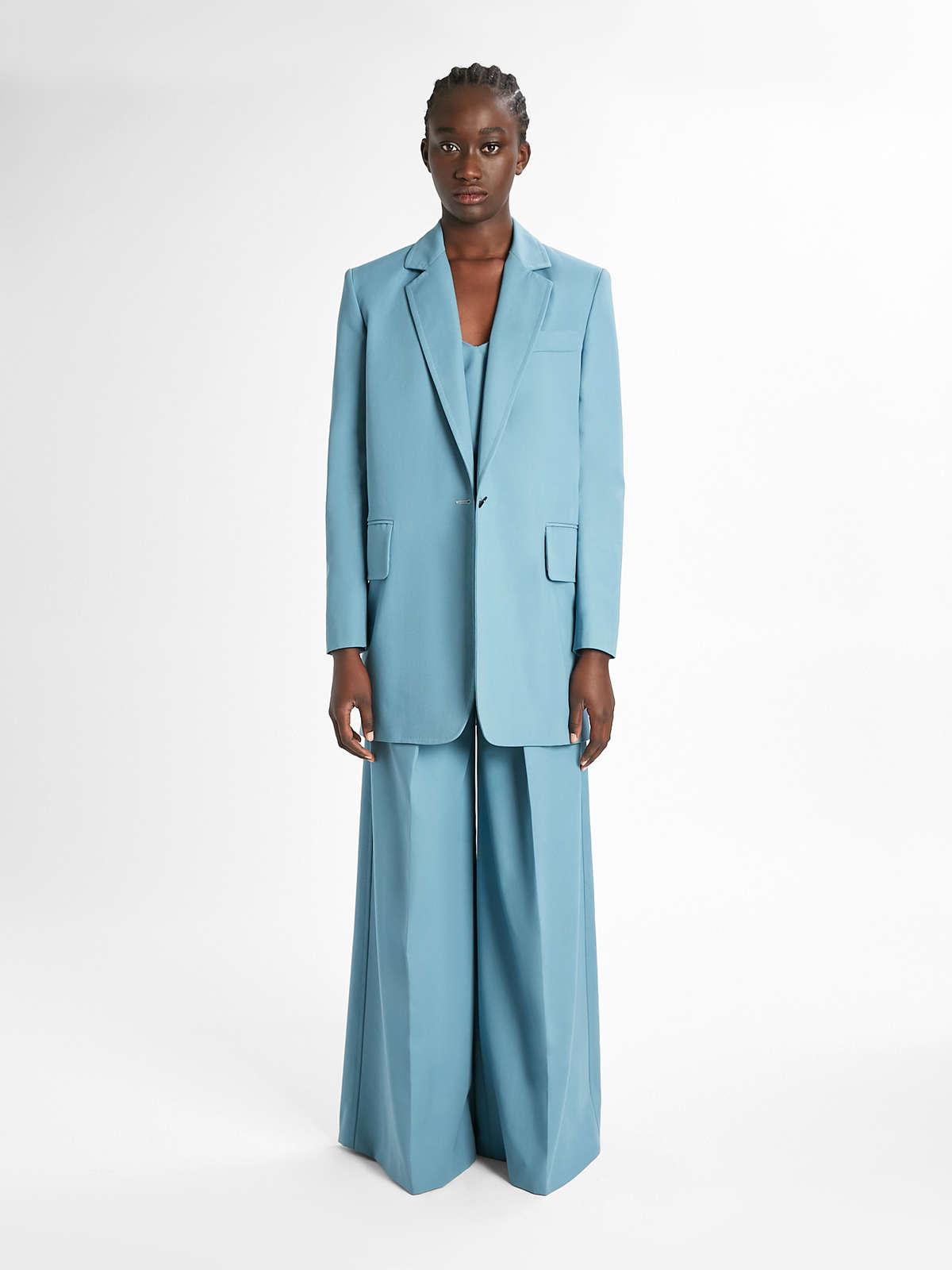

(Example of a Gabardine Suit)
Tweed
Tweed: Tweed, with its distinctive coarse texture, brings a touch of sophistication to any wardrobe. This fabric is created by combining colored wool fibers, resulting in a unique and textured surface. Known for its warmth and durability, tweed exudes a classic charm that never goes out of style. From tailored suits to timeless outerwear, tweed has stood the test of time in the world of fashion.
- Texture: Tweed fabric is characterized by its coarse, textured surface, created through a combination of colored wool fibers.
- Drape: It usually has a structured drape, giving a classic and tailored look.
- Weight: Tweed is a medium to heavyweight fabric, providing warmth and comfort.
- Pros: Tweed is warm, durable, and offers a timeless, sophisticated aesthetic.
- Cons: It may require careful handling to avoid damage to the delicate fibers.
- Examples: Tweed is commonly used for suits, jackets, skirts, and outerwear.
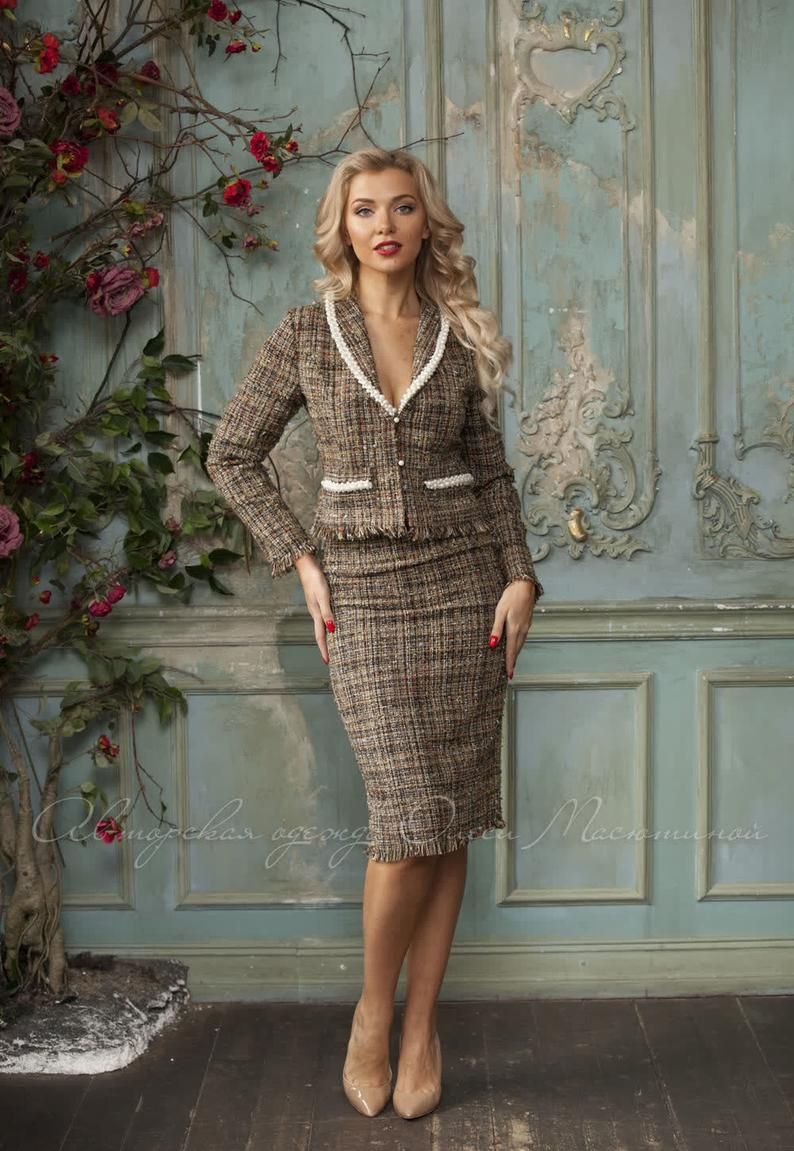

(Example of a Tweed Suit)
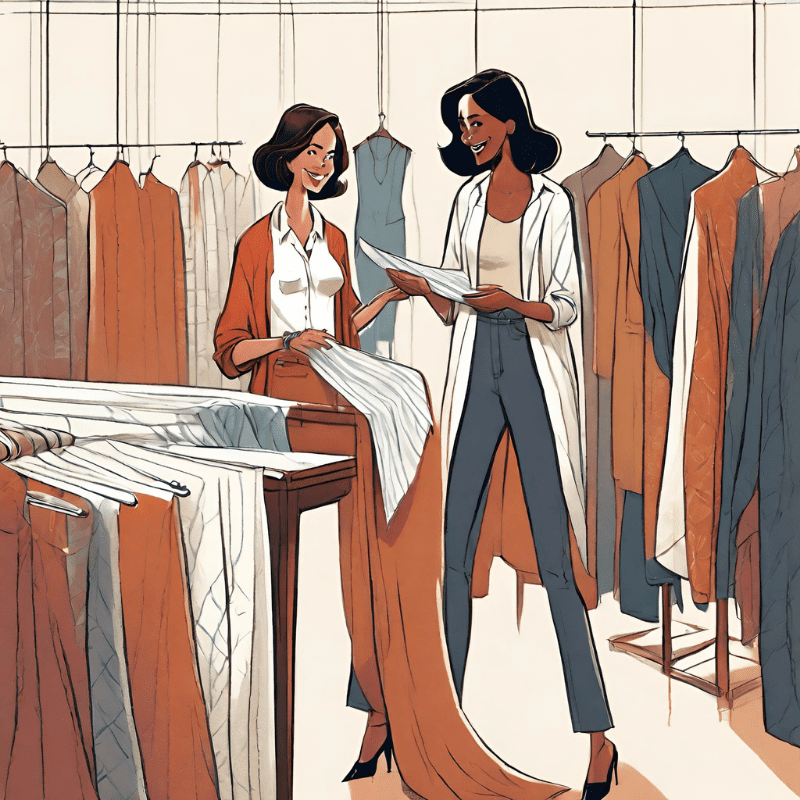

Fabric 101 for Designers: How To Select Your Fabrics
Crafting Dreams: Defining the Vision
Embark On A Journey Into The Heart Of Fabric Selection With Our Comprehensive Guide. From Understanding The Unique Characteristics Of Each Fabric Type To Exploring Their Diverse Textures, Drapes, And Movements, This Guide Is Your Passport To Crafting Exceptional Designs. Dive Deep Into The World Of Fabrics, Unravel Their Secrets, And Master The Art Of Pairing Them With Design Accents For Truly Captivating Creations. Let’s Weave The Fabric Of Your Imagination Into Fashion Reality!
Categories
Dora Fashion
Fabrics
Manufacturing
Fashion Design
Marketing & Branding
Related Articles
Related
Fashion Design 101: The Color Theory and Color Influencers
Color Theory In Fashion Design Revolves Around Understanding How Colors Interact, Complement, Or Contrast To Evoke Emotions And Convey Messages Through Clothing. It Encompasses The Color Wheel, Harmonies, Contrasts, And Their Psychological Effects. This Knowledge...
Fabric 101 for Designers: How to Select Your Fabrics
Embark on a journey into the heart of fabric selection with our comprehensive guide. From understanding the unique characteristics of each fabric type to exploring their diverse textures, drapes, and movements, this guide is your passport to crafting exceptional...
Fabric 101 for Designers: Understanding the Basics
In This "Fabrics 101 For Designers" Series, We Embark On A Journey Through The Diverse Realm Of Textiles, Uncovering Their Unique Characteristics And Unraveling Their Potential. From The Luxurious Embrace Of Silks To The Dependable Structure Of Denim, Each Fabric...

